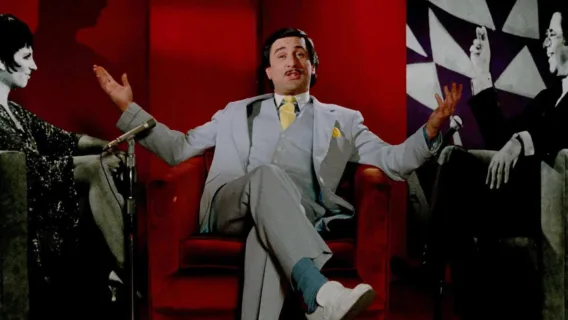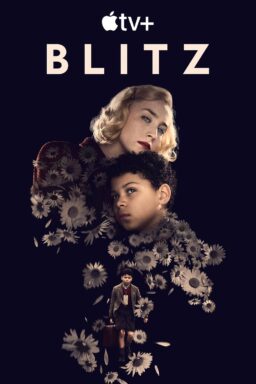 In "Certified Copy," his most recent movie, director Abbas Kiarostami adopts an intriguing and surprisingly efficient narrative strategy: after structuring the first half of the film emphasizing the realism and naturalism of the situation and of the dynamic between the characters, he changes the internal logic of the movie in the second half in a subtle but clear way, investing from then on in a tone that flirts with fantasy by establishing a fascinating game involving the main couple.
In "Certified Copy," his most recent movie, director Abbas Kiarostami adopts an intriguing and surprisingly efficient narrative strategy: after structuring the first half of the film emphasizing the realism and naturalism of the situation and of the dynamic between the characters, he changes the internal logic of the movie in the second half in a subtle but clear way, investing from then on in a tone that flirts with fantasy by establishing a fascinating game involving the main couple.
Written by the director himself, the movie begins with a lecture given by the writer James Milles (Shimell), who has just released a book that defends the importance of replicas of great works of art in a general way. Attending the event is the character played by Juliette Binoche, who owns a gallery and seems to be fascinated by Milles, offering to take him on a tour in Tuscany before he leaves Italy. Disagreeing with some aspects supported by the author in his book, she initiates a discussion while they visit museums and restaurants, until something curious eventually occurs and they start to act and talk as if they were a couple with 15 years of marriage.

But why do the characters adopt this behavior? The possibility that they are really married and were just playing a kind of seduction game becomes implausible when we remember that her preadolescent son doesn't know the writer and that this solution would be too artificial. On the other hand, it is perfectly possible that both start to act as a married couple intentionally, as a way to do a psychological or intellectual exercise after the owner of a café thought they were married -- but even this interpretation would demand a great effort of imagination, because the transition happens so abruptly.

Therefore, there is a third -- and, I believe, more logical -- possibility: the characters take on a different dynamic because they in fact become different individuals whose lives combine elements of both realities. And this alteration happens simply because it's fundamental for the discussion Kiarostami proposes: that our perception about the characters (or about art in a general way) isn't or shouldn't be affected by the confirmation of its unreality. The ideas presented by the movie and its characters, as well as their personal issues, are dramatically efficient and relevant even though they are naturally false -- and they are always false, since we are, after all, talking about a fiction, independently of the couple's version presented by the movie.
However, in order to make this argument work, it was mandatory that the audience was caught by surprise by the changes the characters experience -- and that's where the director demonstrates his intelligence by establishing a consistent logic during the first hour of projection just to pull the rug under the public right after. In order to do that, Kiarostami conceives a narrative grounded on naturalism in its tiny details, from the writer's embarrassed pauses when his jokes don't make the audience laugh to the way Binoche hits her purse on his face when she removes it from the car seat so he can sit.

Likewise, the director invests in long scenes that, comprised from extensive and static shots, give a realistic rhythm to the conversations, which also reveal fluidity thanks to the minimalistic but precise performances of the main couple: observe, for example, how Binoche completes the joke Shimell was telling in order to prove a point or the way she interrupts a sentence to complain about a pedestrian who crossed the street in front of her car and you will certainly confirm the director's strategy and his actor's -- especially by contrasting these moments with others that happen during the second half of the movie, when the performances become more intense and gimmicky, as we can observe when a lone tear is seen streaming down Binoche's face or when Shimell treats a waiter with an aggressive arrogance.
By the way, the acting style is not the only thing that changes at this point of the story, but also the essence of the characters itself: if initially Binoche is insecure and even reverent before the writer ("I can't believe you're in my car!"), she eventually starts to treat him with hostility and accusations. Besides, her quasi-obsession with the intrinsic value of "real" experiences (or artwork) gradually evolves into an intense bitterness until it culminates in an obvious emotional neediness.
On the other hand, if the writer originally seems to be a restrained and secure man who values -- even though only rationally -- the idea of "enjoying life," this position ends up becoming a resentful and angry attitude of undeniable immaturity and selfishness. If these changes sound radical, and so they are, it is because, it's worth to repeat, the characters themselves are changing and taking on new stories and personalities that are slightly different - and it's admirable the control that Binoche and Shimell keep during their acting, considering the complexity of the demanding narrative structure itself.

But "Certified Copy" is also admirable in its formal aspects, since Kiarostami frequently conceives his frames not only in an economic way, but also in an intensively evocative one, charging them with symbolisms and metaphors. First of all, it's notable the visual logic he adopts to subtly indicate the changes on the film's structure; the precise moments when the characters experience the previously discussed changes in their stories/personalities/facets -- something that occurs precisely in the scenes in which the couple, during some arguments, look directly at the camera and, thus, to the audience. In a similar way, it's impossible not to be hooked by compositions such as the one shot that shows the writer admiring a motorcycle while we see Binoche, reflected on its rear-view mirror, talking to strangers about the thematic beauty of a sculpture: the shot exposes exactly the characteristics of the couple in that moment: she is romantic and lonely; he is self-centered and always willing to leave.

And more: it's curious to notice how Kiarostami frequently focuses on Binoche and Shimell interacting with other couples (particularly one that's newlywed, another one that seems to be in a two or three decades-long marriage and an elderly third one), since these people end up reflecting different stages and facets of the relationship kept by the main characters themselves. This gets even clearer when the writer is seen in front of a window that exposes, in its background, the celebration of a wedding - in other words, one more projection of his past or just another version of it.
Because, in reality, it doesn't matter if what we see are the same characters that initiated the movie, since, in one way or another, all of them are fictional projections created by Kiarostami. Reflecting the theme discussed in the book seen in the movie (and that names it), the differences between original and copies are negligible: what really matters is our perception of the film (or of its characters) and the wonderful reflection it inspires on us.
Pablo Villaça, one of Brazil's leading film critics, publishes his reviews at cinemaemcena.











